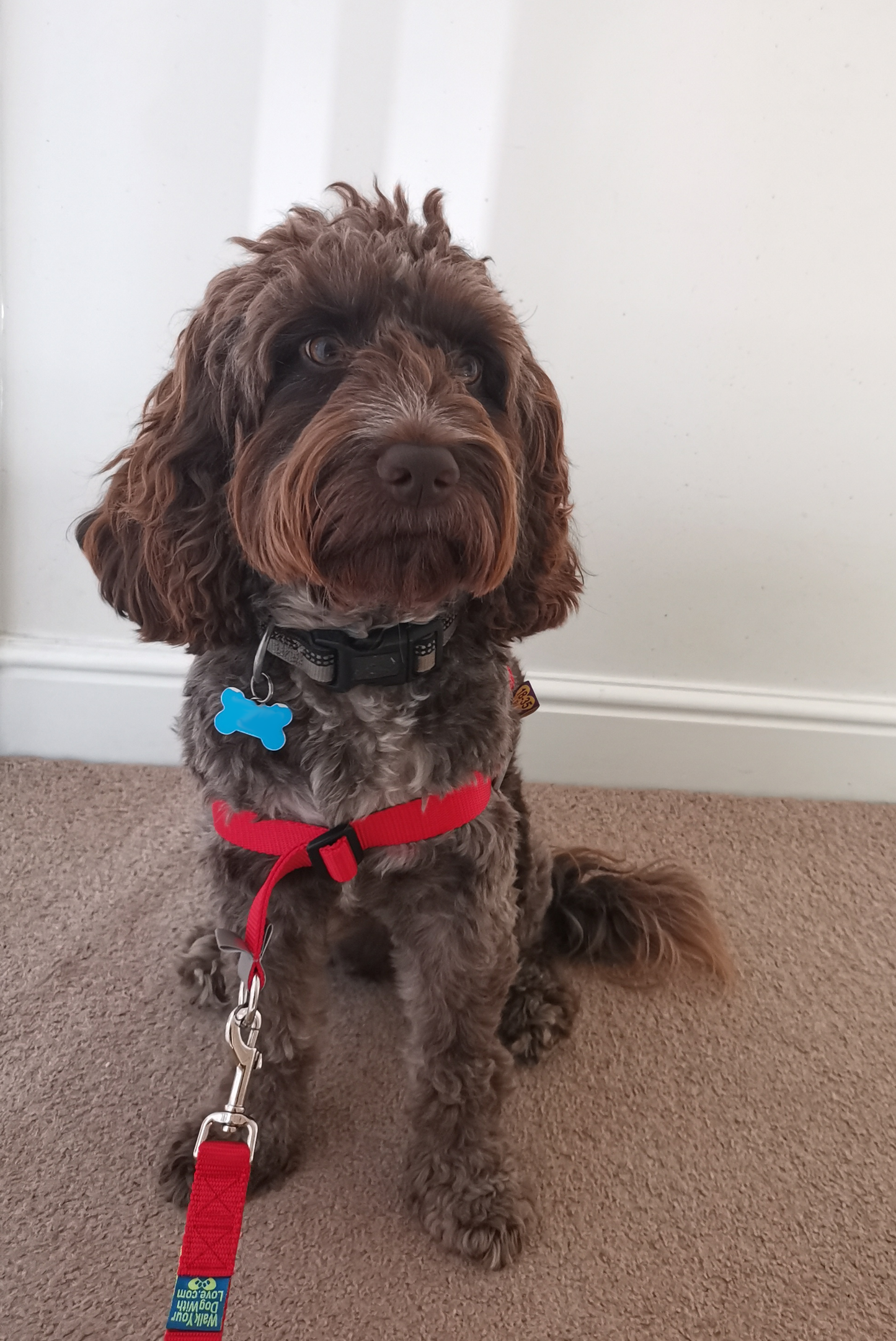While it will take time and patience to train your puppy, you can teach your dog to walk on a loose lead with just a few pieces of equipment and some basic training techniques.
How to walk your dog with love on a loose lead
You will require:
- A buckle collar and a front clip harness (Walk your dog with love - no pull)
- A lead: 4 or 6 feet in length (not an extendable lead)
To get started:
- Easy access treats in a pocket or treat pouch.
- Choose which side you want the dog to walk on and place a few treats on that side of your body. Hold treats in your left hand, for example, if you want your dog to walk on the left side.
- Hold the lead in the opposite hand to the dog. Hold the end of the lead in your right hand if your dog is on your left. Allow the rest to hang loosely in a "J" shape.
- Take a step forward and pause. It is acceptable if the dog does not remain in the "heel" position. Treat your dog from your hand, parallel to the seam of your pants. This will assist you in positioning the dog.
- Repeat. Take a step, pause, and feed a treat along the seam of your pants.
- When the dog looks up at you eagerly for more treats, take two steps rather than one before stopping and feeding the dog.
- Stop walking immediately if the dog pulls ahead.
- Call your dog back to you, or use the treats in your hand to entice them to return to you, but don't treat them yet: take two to three steps forward before treating. This is to avoid teaching a sequence such as "I pull ahead, I come back, and I eat." We want them to understand that walking alongside you on a loose lead results in treats, not pulling.
- Increase the distance between each treat gradually. You can chat with your dog to keep their attention on you.
- Give this type of walk a name when the dog walks well on a loose lead. It could be "heel," "with me," "let's walk," or another word/phrase.
- When your dog no longer needs to walk in "heel" position, release them ("all done," "ok," "that'll do," etc.).
To demonstrate a "off-duty" walk:
This will be used when the dog does not need to be in the "heel" position and you want a bit more of a relaxed walk with your dog. The only rule is your dog is not allowed to pull on the lead.
- Choose a word to represent this new type of walk. You can use "free time," "hike," "at ease," or any other word you want, as long as it differs from your formal walk cue.
- Choose the appropriate length of leash for your dog. If you're walking your dog on a 6-foot lead, you could just hold the loop end and let the rest hang loose. Plan on holding some of the lead in your hand throughout the walk rather than releasing and gathering it several times. This is to teach the dog how much leash they will have.
- Give your dog the signal ("free time") and go for a walk. They can sniff, change sides, look around, and lie down on occasion, but not pull.
If your dog pulls forward, pause and call him back towards you before proceeding. - If your dog becomes fixated on a person, another dog, or another animal, call his or her name and, if possible, move in the opposite direction.
- Getting closer to the distraction will be more difficult and will almost certainly cause your dog to pull.
- Bring your dog back to your side and cue him to walk in "heel" position (due to an approaching walker, bike, etc.).
Walk your dog with love and good luck and remember to focus on praise and reward all the good behaviour










